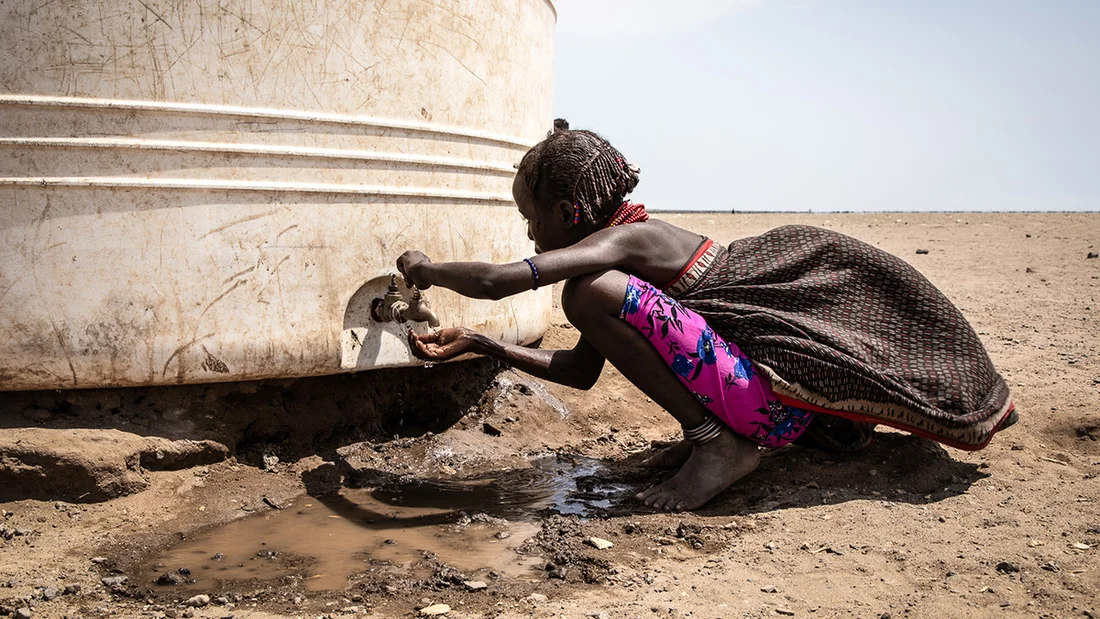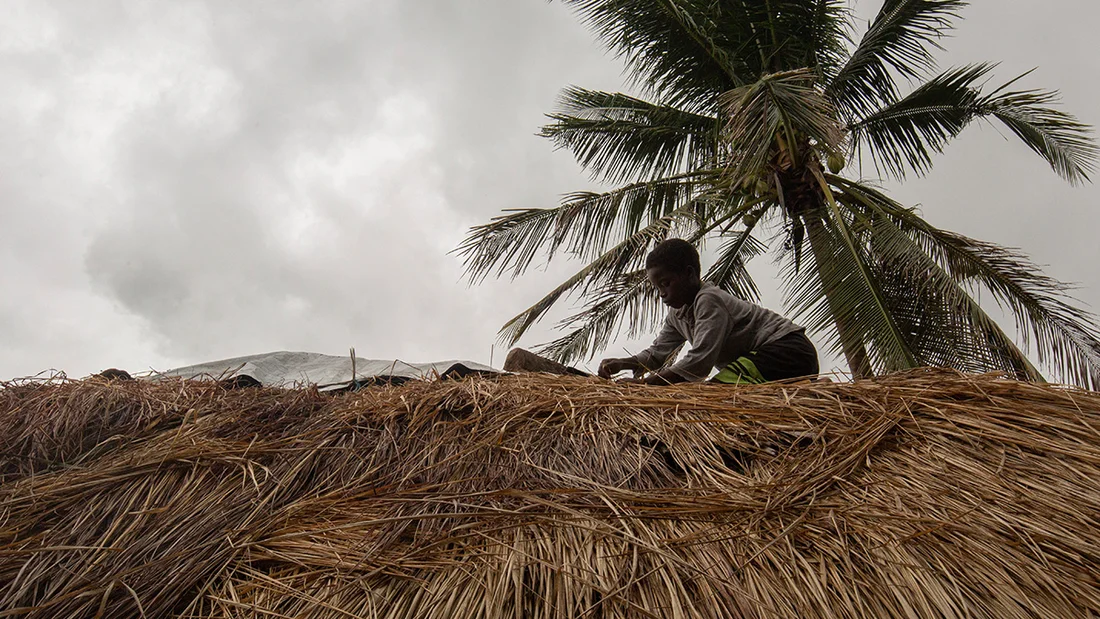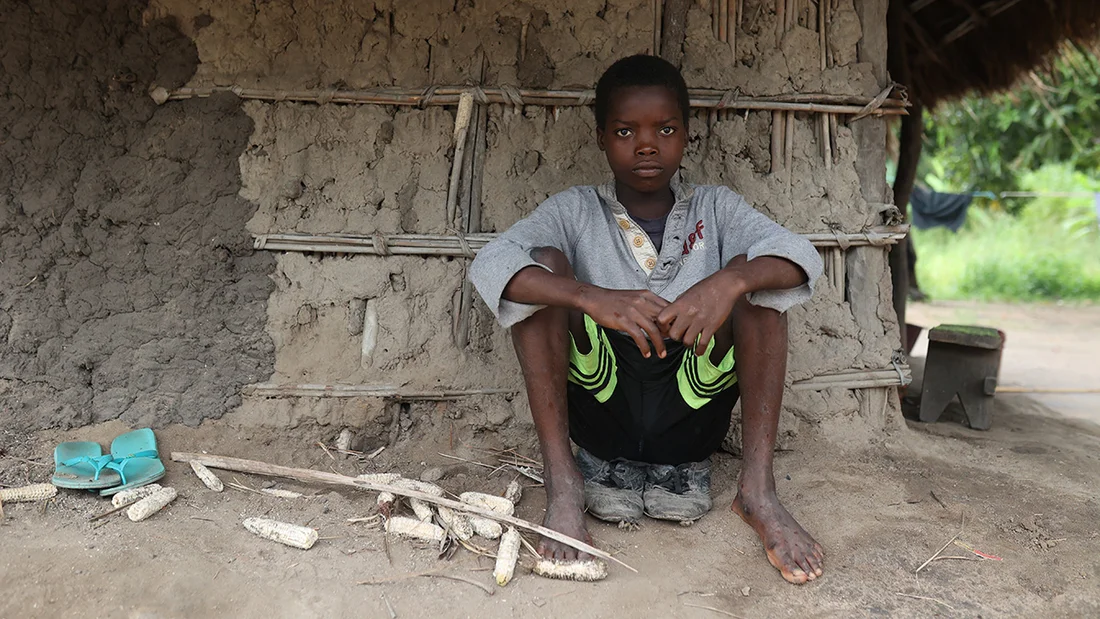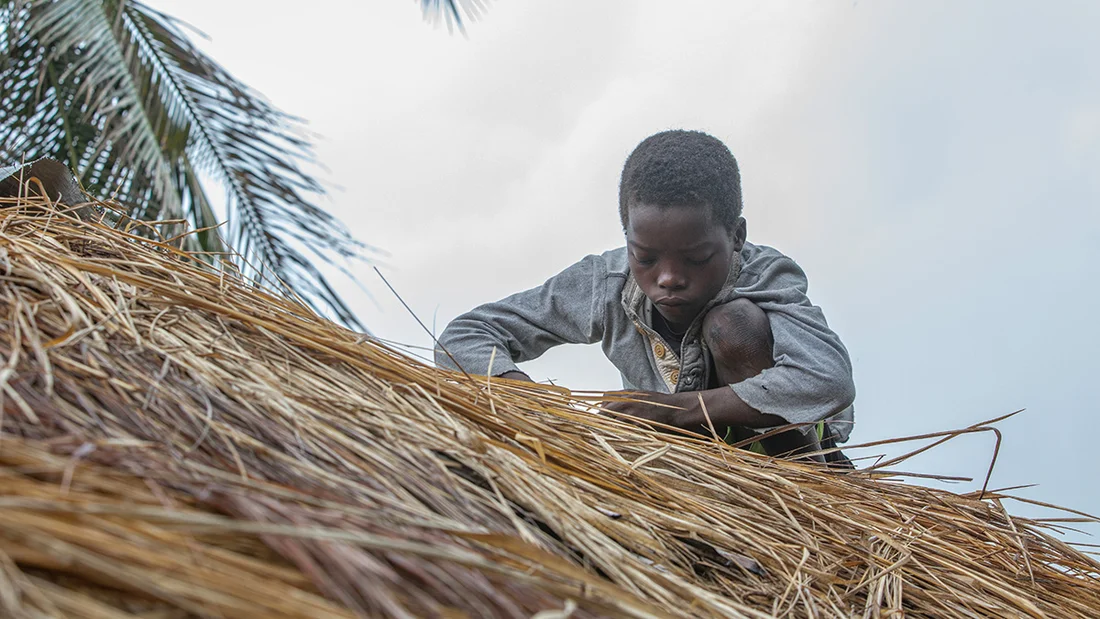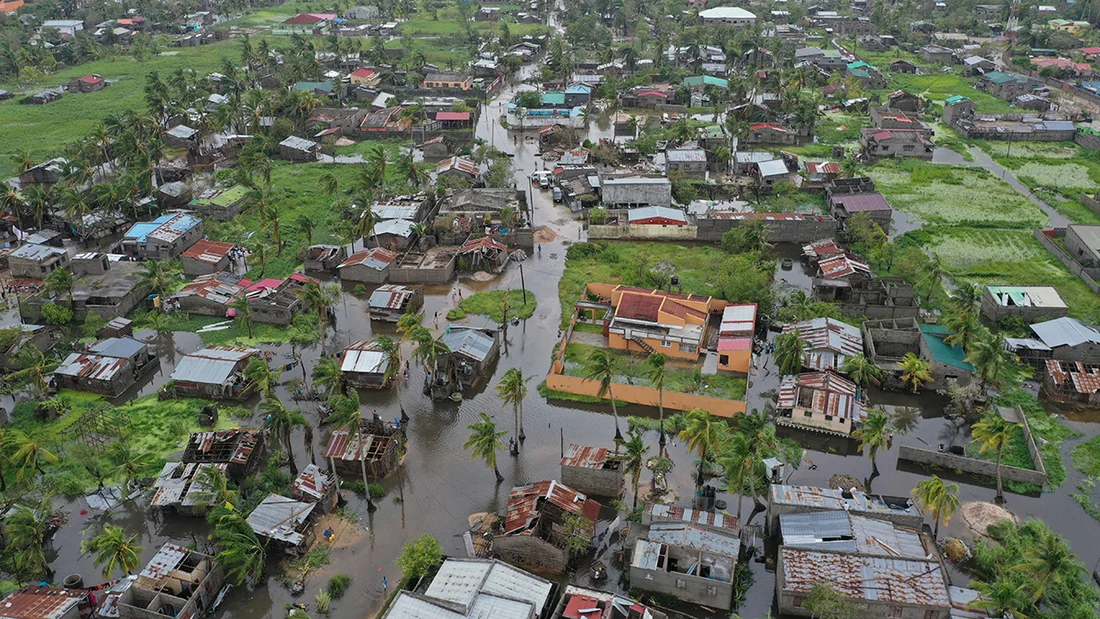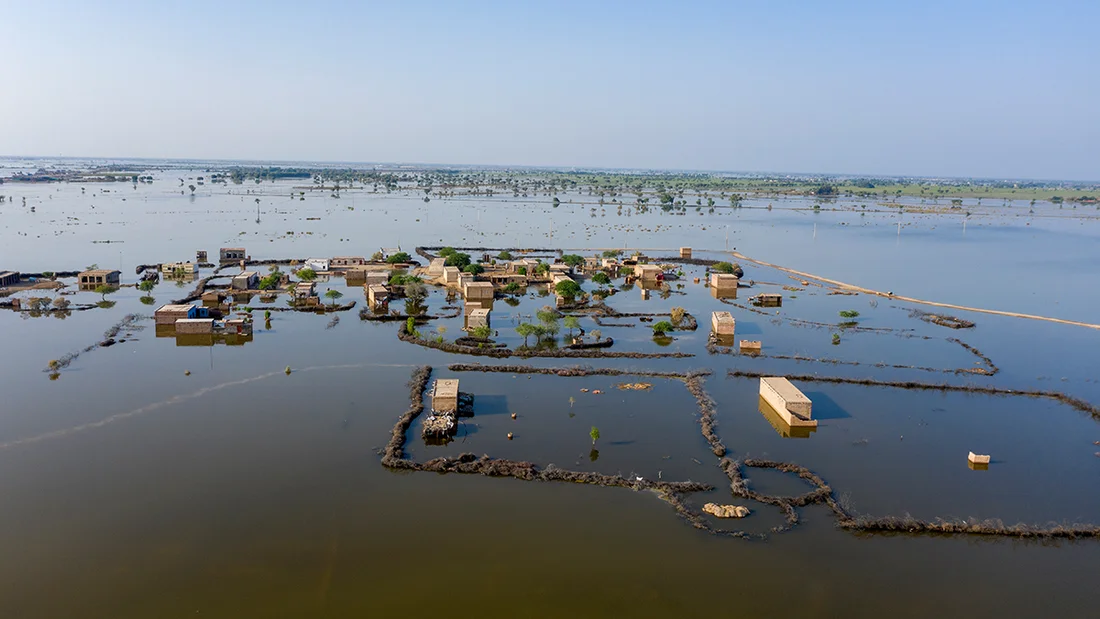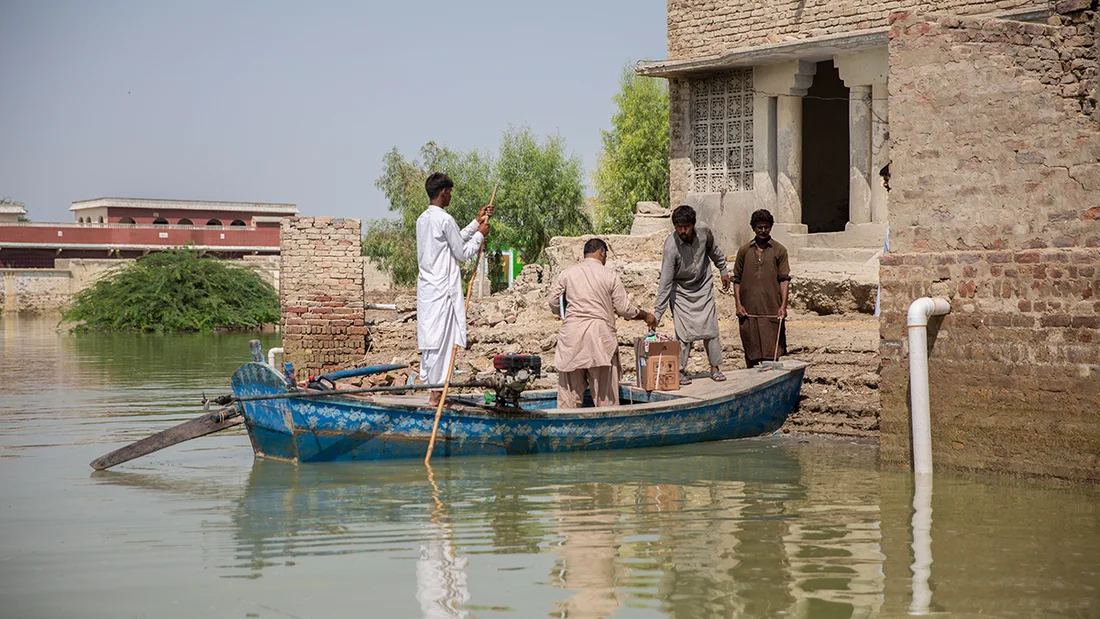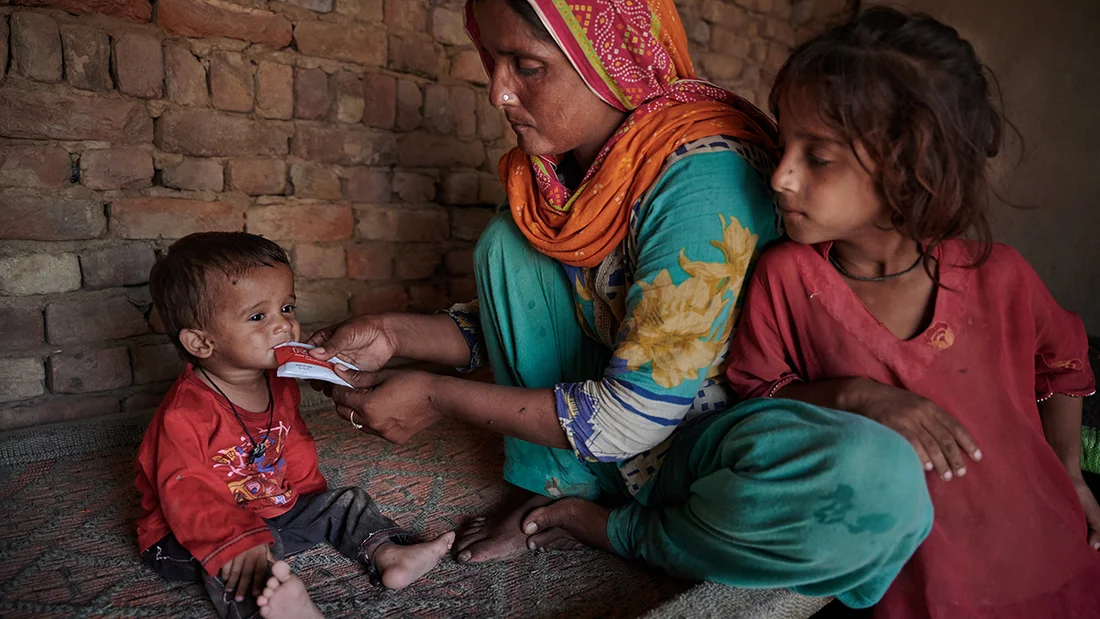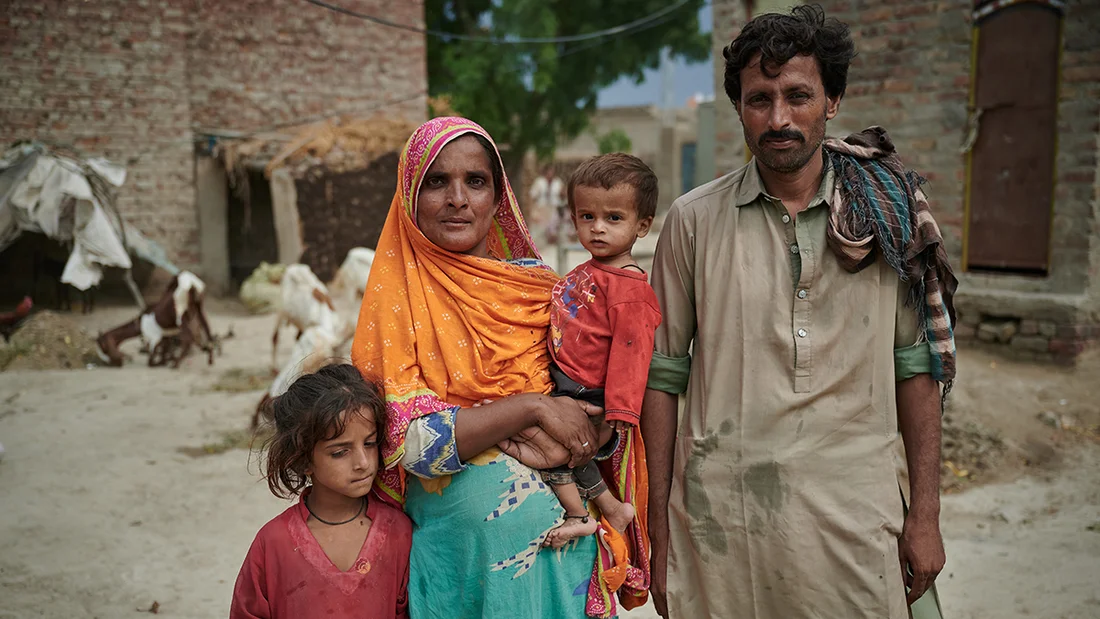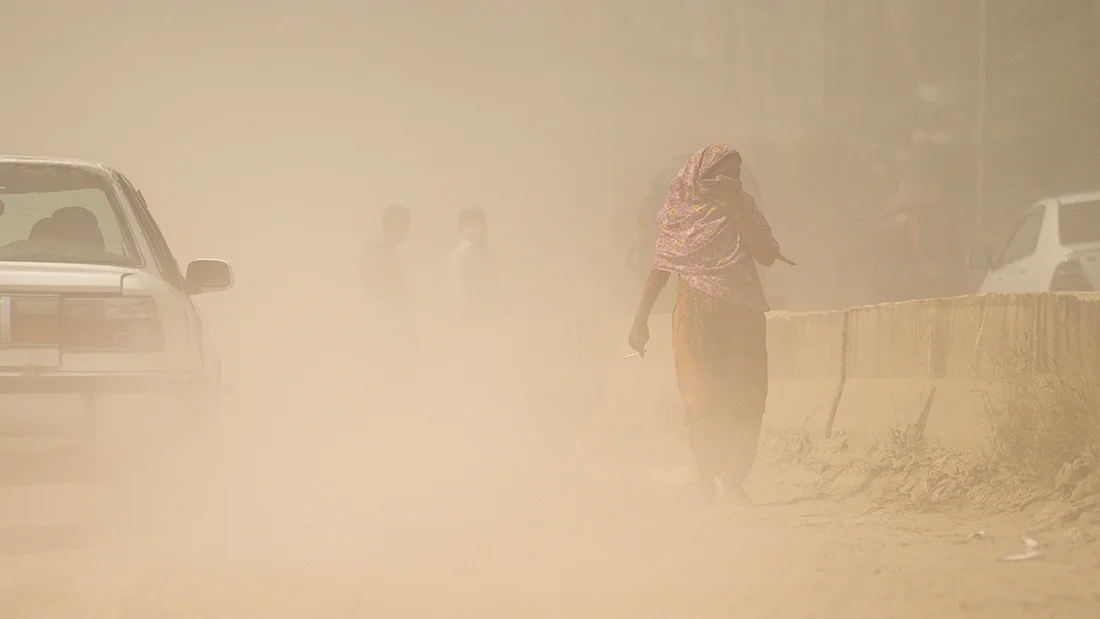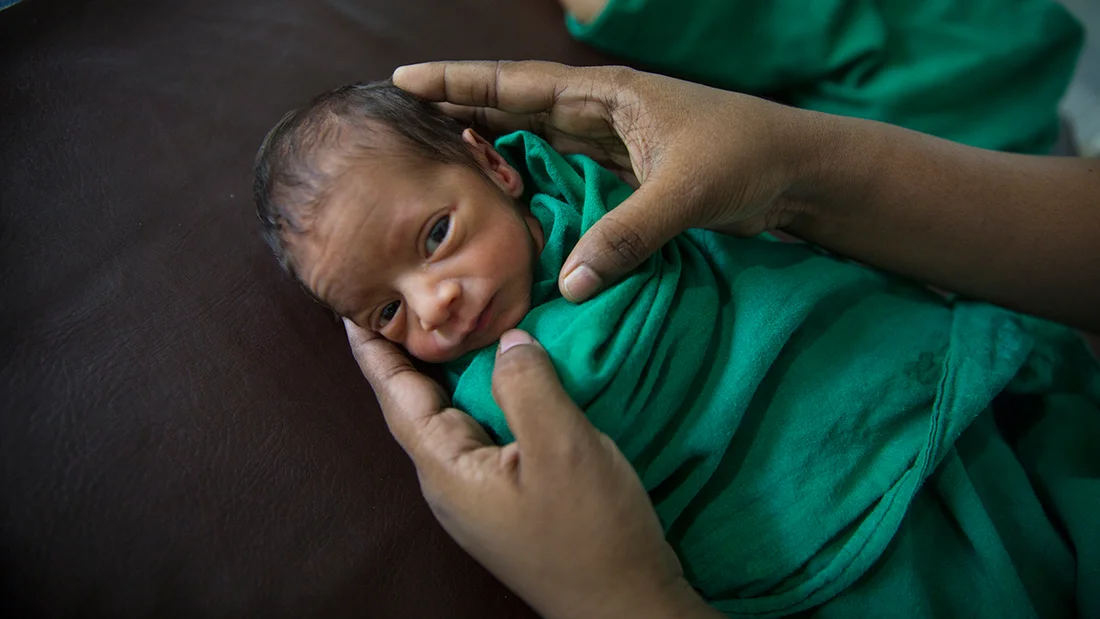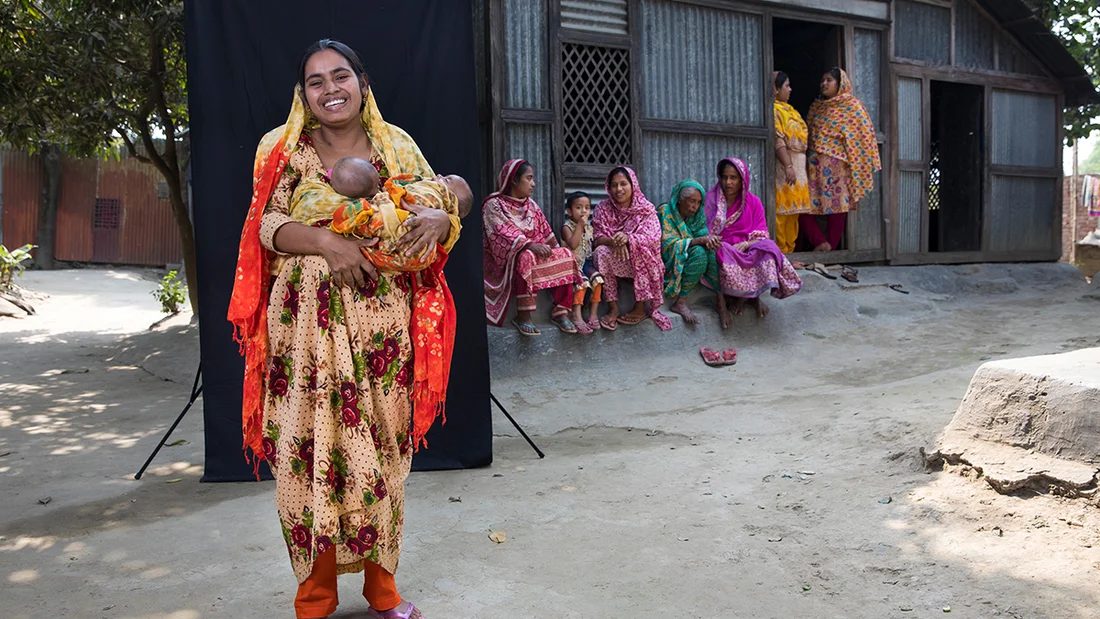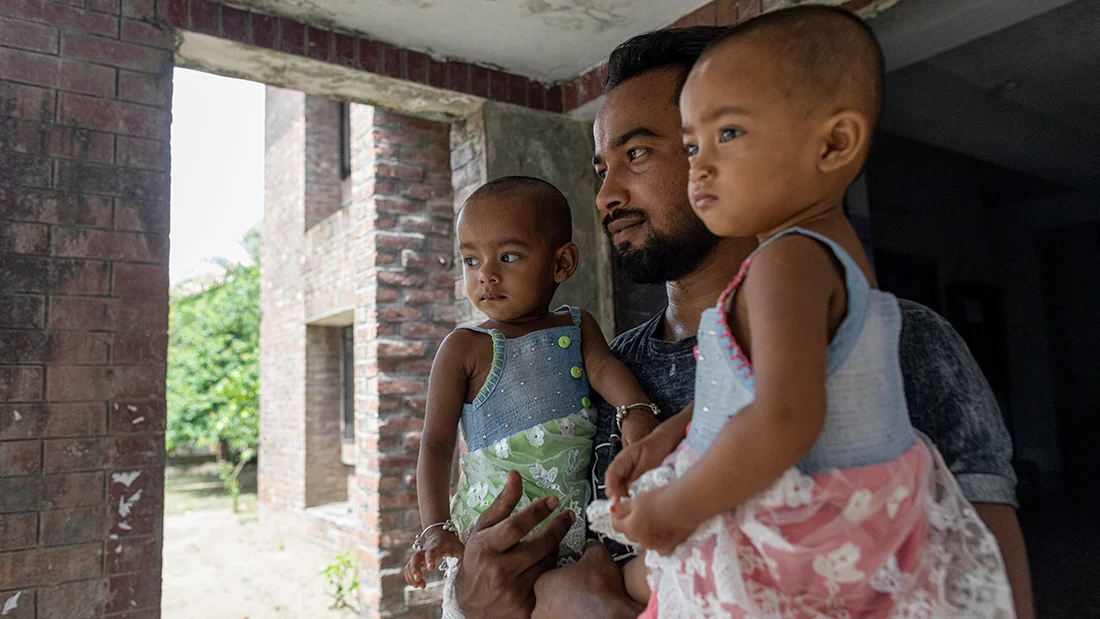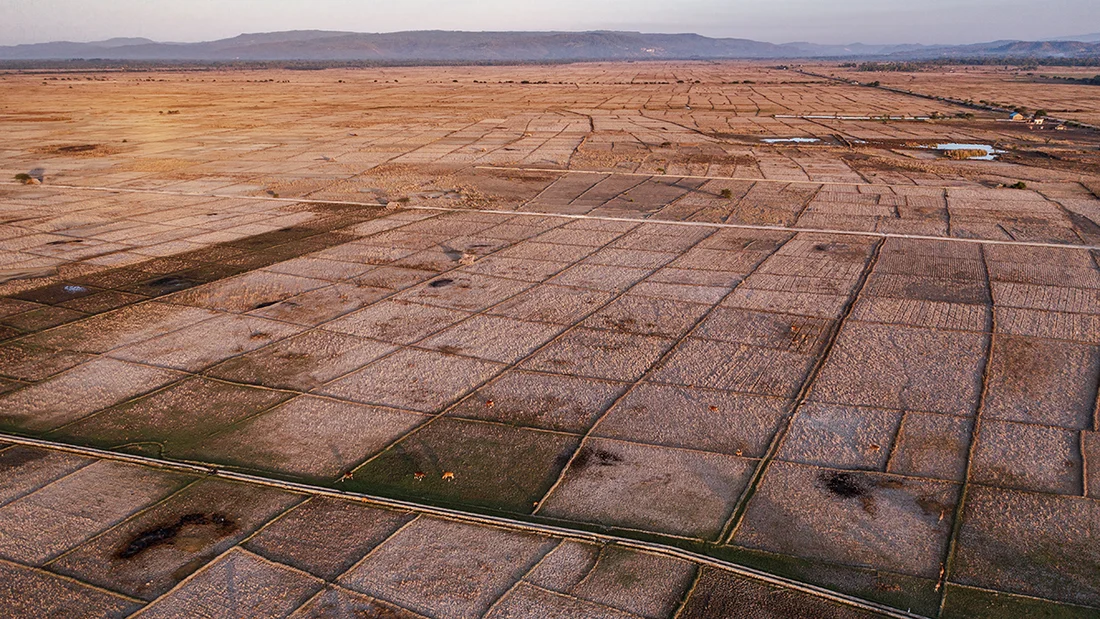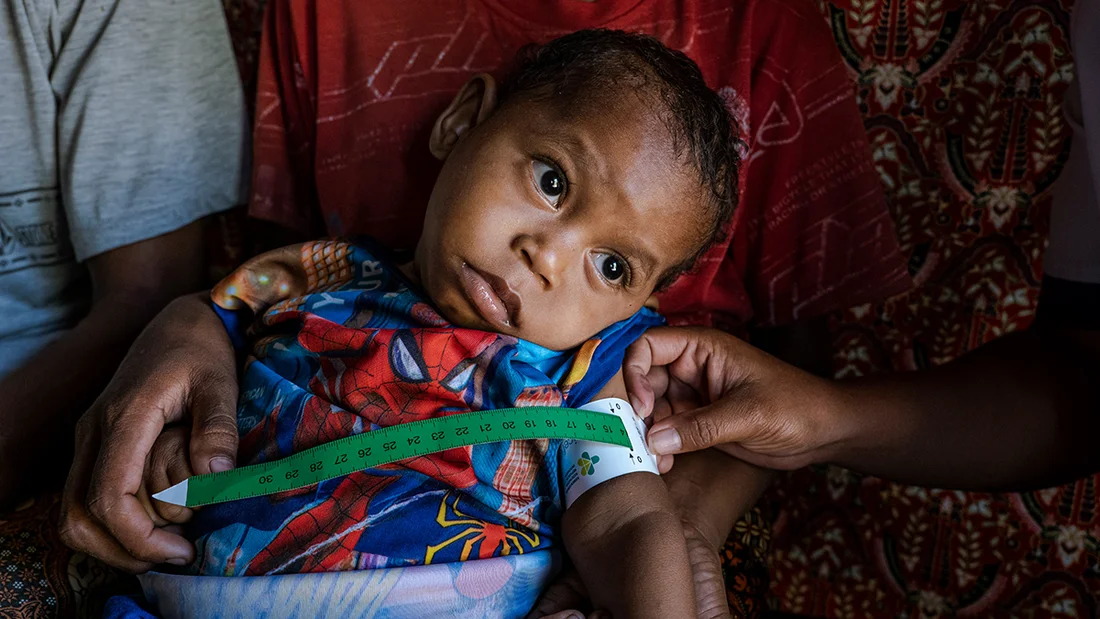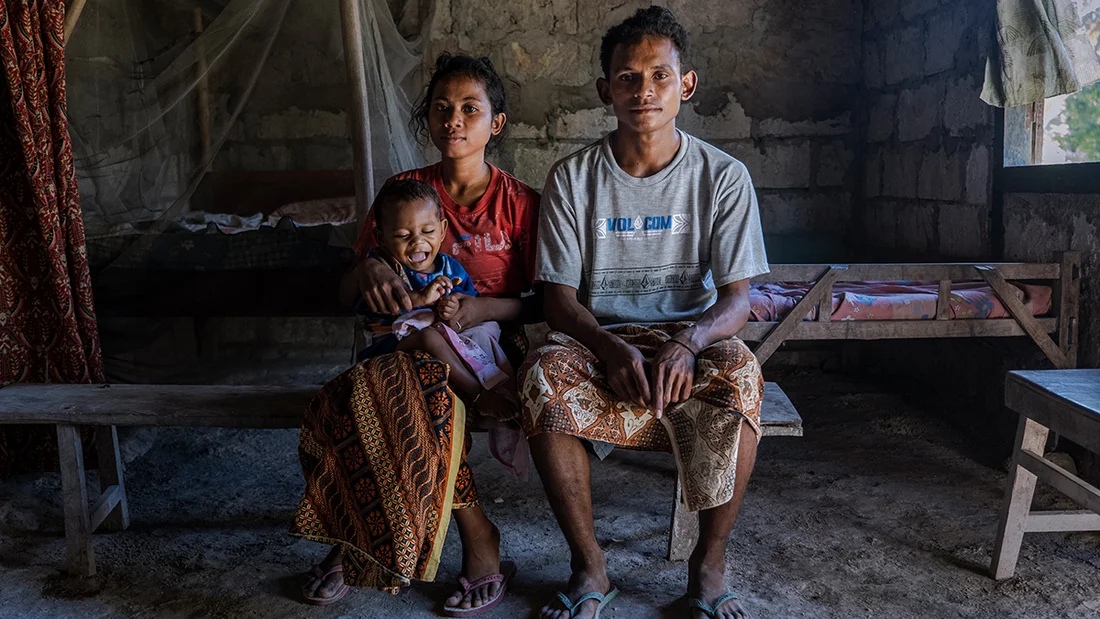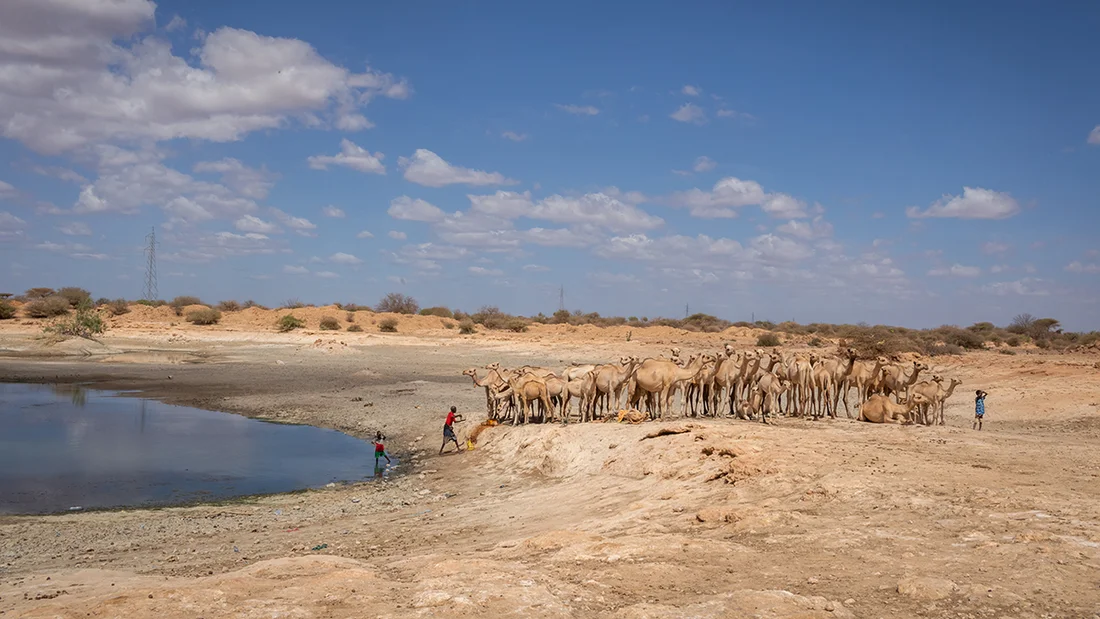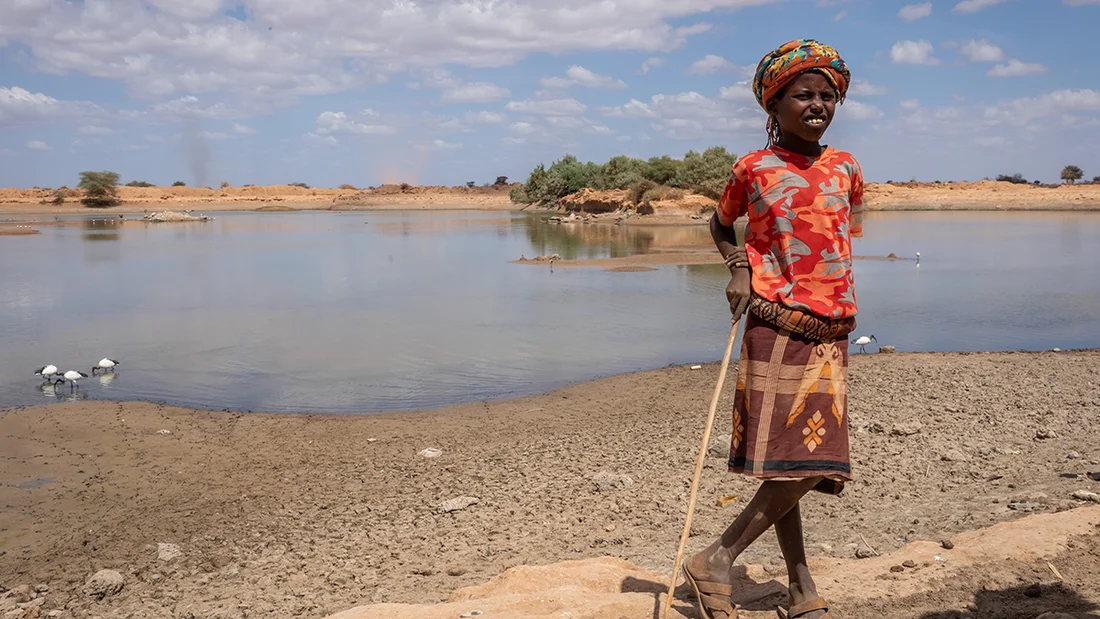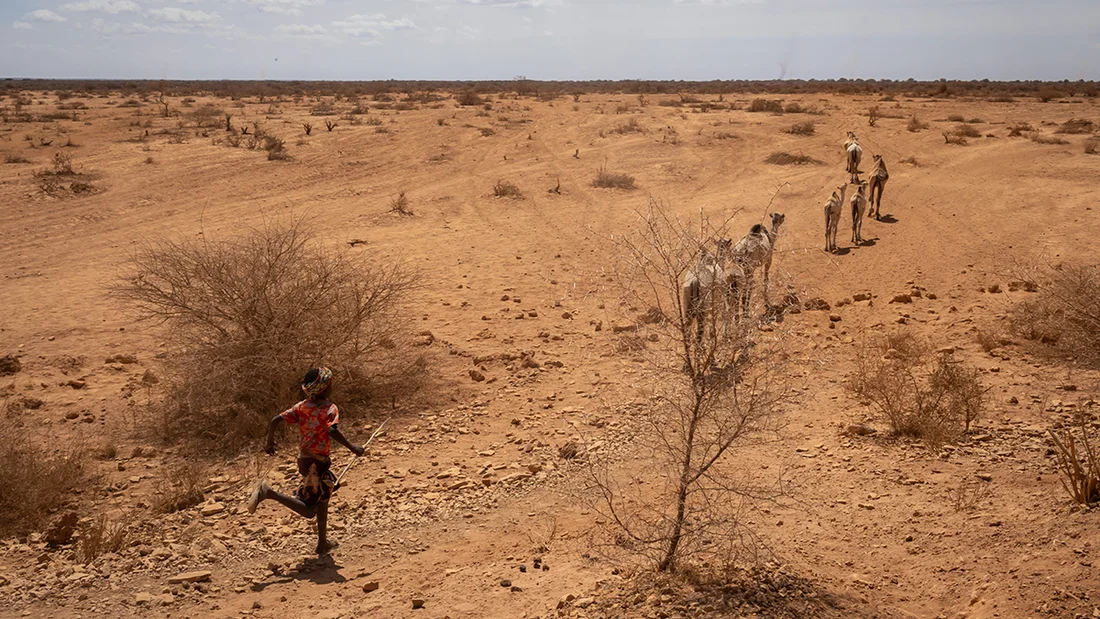The climate crisis represents an unprecedented threat to the future of all the world’s children. The summer has been one of extremes, with record heat, strong rains, forest fires and floods. But how far-reaching are the consequences of climate change? This blog article illustrates the five most dangerous climate risks for children through five individual stories.
The climate crisis is putting one billion children in peril – that corresponds to almost one out of every two children worldwide. Among them are twelve-year-old Manuel Benjamin from Mozambique, 16-month-old Azaan Ali from Pakistan, one-year-old twins Naurin and Naushin from Bangladesh, one-year-old Alfa from Indonesia and ten-year-old Bukhari Aden from Ethiopia. They all are suffering from different kinds of extreme weather brought on by climate change. This blog tells their stories in the context of the five most dangerous climate threats.
Our planet is increasingly becoming a hostile place for children
The climate crisis represents an unprecedented threat to the health, nourishment, education, growth and survival of all children. Children are disproportionately threatened by water and food scarcity, infectious diseases and the impacts of extreme weather events. Changed weather conditions have negative effects on children’s access to educational programmes, healthcare, safe drinking water and other important services.
Children are also more vulnerable than adults to the impacts of climate change because of their different anatomy and physiology. They need more food and water per unit of body weight, are more likely to succumb to extreme weather events like droughts, floods and storms, and are more susceptible to the effects of temperature fluctuations, toxic chemicals, and diseases made more prevalent by climate change, like malaria or dengue fever.
The impacts of climate change are also affecting children’s psychological health. The disasters, crises and associated threats to their future have triggered widespread anxiety and feelings of hopelessness.
In 2021, UNICEF published the report “The Climate Crisis is a Child Rights Crisis: Introducing the Children’s Climate Risk Index”, the first comprehensive analysis of different climate risks from a child’s perspective. The report ranks countries on children’s exposure to climate and environmental shocks.
Almost every child on earth is exposed to at least one climate or environmental hazard, but children in the most severely affected countries are exposed to several hazards, shocks and stresses at once. At the same time, it is these children who are especially vulnerable, because of inadequate basic care in the areas of water and hygiene, health and education.
In 2021, UNICEF published the report “The Climate Crisis is a Child Rights Crisis: Introducing the Children’s Climate Risk Index”, the first comprehensive analysis of different climate risks from a child’s perspective. The report ranks countries on children’s exposure to climate and environmental shocks.
Almost every child on earth is exposed to at least one climate or environmental hazard, but children in the most severely affected countries are exposed to several hazards, shocks and stresses at once. At the same time, it is these children who are especially vulnerable, because of inadequate basic care in the areas of water and hygiene, health and education.
Climate risks affect billions of children:
- 400 million children are highly exposed to cyclones
- 570 million children are highly exposed to floods
- One billion children are highly exposed to extremely high levels of air pollution
- 820 million children are highly exposed to heatwaves
- 920 million children are highly exposed to water scarcity
The following five stories illustrate five grave and manifold dangers that children face from anthropogenic climate change.
1. Cyclones
About 400 million of the earth’s children live in areas that are severely impacted by tropical cyclones. These rapidly rotating low-pressure storms develop over (sub)tropical oceans and cause flooding, storm surges, extreme winds and lightning.
Each year, millions of children are affected by cyclones. The frequency of high-intensity cyclones is increasing because of the warming and rising of the oceans. Tropical cyclones pose severe and immediate dangers, including grave injury and death, the collapse and destruction of essential health and water resources and sanitary services, and the displacement of many people. In 2020, there were over 9.8 million weather-related internal displacements of children. Such displacements also increase children’s risk of being subject to violence, abduction and human trafficking.
Cyclones also frequently destroy schools or make it impossible to reach them. This forces children to miss school. And once they leave, there is a very high probability that they will not return. A lack of educational opportunity robs them of their chances for a better future.
2. Floods
Much of the world’s population lives no further than 100 kilometers from the seacoast or near rivers fed by glaciers or snow. This means that 240 million children in coastal regions and 330 million children in river basins are highly exposed to floods.
The risk of flooding is increasing steadily because of extreme weather caused by global climate change. Higher precipitation levels, stronger and more frequent storms, and the melting of glaciers and snow, as well as changes to the soil surface – such as the destruction of forests – increase the risk of flooding in river basins.
Aside from the immediate threat of death and injury, floods impede access to safe drinking water. Seawater finding its way into freshwater reservoirs affects not only the quality of drinking water and thus the health of the people who drink it, but also the irrigation systems of agricultural fields. It also damages sanitary facilities, which in turn leads to water contamination. This exposes the affected population to diarrheal diseases, which can lead quickly to dehydration and malnutrition.
3. Air pollution
Air pollution is one of the most devastating environmental hazards to human health. Every day, 90 percent of children globally breathe polluted air. One billion children – almost one in two – are exposed to extremely high air pollution (>35µg/m3*).
At the same time, air pollution is a major cause of numerous deaths and illnesses globally, including pneumonia, asthma, lung cancer and heart disease. In 2016, an estimated 600,000 children died from illnesses and infections associated with air pollution.
One reason is that children’s bodies react more sensitively to polluted air than adult bodies. Their lungs and brains are still growing, their immune systems are still developing and their airways are more porous.
The most disadvantaged children, already suffering from health problems and inadequate healthcare, are the most exposed to the risk of illnesses caused by air pollution.
Air pollution also poses numerous risks for pregnant people – and therefore indirectly for their children: Studies reveal a connection between high air pollution and miscarriages, premature births, neonatal mortality, low birth weight and infertility.
The neonatal mortality rate is the annual number of deaths of children within the first months of life. In 2021, 2.3 million newborns did not survive this especially critical phase, meaning that almost half of the children who die before their fifth birthday do not even survive their first month of life. The neonatal mortality rate is falling more slowly than the drop in the under-5 mortality rate.
4. Heat
This year saw record-breaking heatwaves in both the Southern and Northern Hemispheres. July 2023 was the hottest month ever recorded on earth. The far-reaching effects of such heatwaves on children can be found in the report “The Coldest Year Of The Rest Of Their Lives: Protecting Children From The Escalating Impacts Of Heatwaves”. It states that, in just 30 years, over two billion children globally will be exposed to longer, hotter and more frequent heatwaves. Even now, 820 million children are greatly exposed to heatwaves that put their health and well-being at risk.
In addition, heatwaves are especially dangerous for children because their bodies cannot regulate temperature as well as adults' bodies can. Infants and small children are most at risk of heat-related deaths. Heatwaves can also negatively impact children’s environments, their safety, their nutrition, their access to water and their education.

“As hot as this year has been in almost every corner of the world, it will likely be the coldest year of the rest of our lives. The dial is being turned up on our planet, and yet our world leaders haven't begun to sweat.”
5. Water scarcity
According to the UNICEF report “Thirsting for a Future: Water and children in a changing climate”, about 663 million people worldwide have no access to clean drinking water. By 2040, around 600 million children – that’s one in four worldwide – will be living in regions with extremely scarce water resources.
Water consumption has risen steadily in the last decades because of the increase in population, industrialization and urbanization, and these are putting a strain on the world’s resources. Even now, in 36 countries the need for water is significantly higher than renewable water sources can deliver. In the coming decades, climate change will bring higher temperatures, droughts, rising oceans and flooding, which will continue to have impacts on the quality and availability of water reserves.
The poorest and most vulnerable children of this world suffer greatly from the growing scarcity of water. Millions of children are already drinking dirty water, with consequences such as the risk of lethal diarrheal diseases. In addition, many children spend hours each day fetching water instead of going to school and learning.
Conclusion
One thing is certain: The climate crisis is not just an ecological problem. It is having damaging and profound impacts on the lives of all people, especially children and their futures. The climate crisis violates children’s rights globally, including their right to life (Article 6 CRC), health (Article 24 CRC), education (Article 28 CRC) and non-discrimination (Article 2 CRC). We must not shut our eyes to the devastating effects. If we want to pass on a planet that’s livable to children and future generations, we must act now.

“Today’s children are looking at a future that – depending on where they live – will be greatly characterized by hazards arising from the climate crisis. There must, therefore, be more invested, immediately and urgently, in adapting children’s living conditions to the changes in their environment.
The only long-term solution to lessening the effects of climate change is to reduce greenhouse gas emissions. Limiting the earth’s warming to a maximum of 1.5 degrees Celsius will require ambitious interim goals and decisive action from governments and businesses.
1. More protection for children
Investment in education; improved access to water, sanitary and hygiene services (WASH); health, nutritional and social services; or simply fighting poverty can lessen climate risks for children and help them be more resilient. UNICEF promotes innovative ideas worldwide that combine climate resilience, environmental protection, and sustainable development.
2. Allow children to be part of the solution
We must involve children and young people more in climate policy negotiations. Not just because it’s their future on the line, but also because they want to participate: Across the world, children and young people are working for more ambitious climate policies. Governments, businesses and key figures must take this engagement seriously and allow young people to take greater part in the decision-making processes involving climate change.
We must join forces to make these necessary changes! Let us work toward achieving a cleaner, safer and more stable environment for all children to protect the rights of children and future generations.
